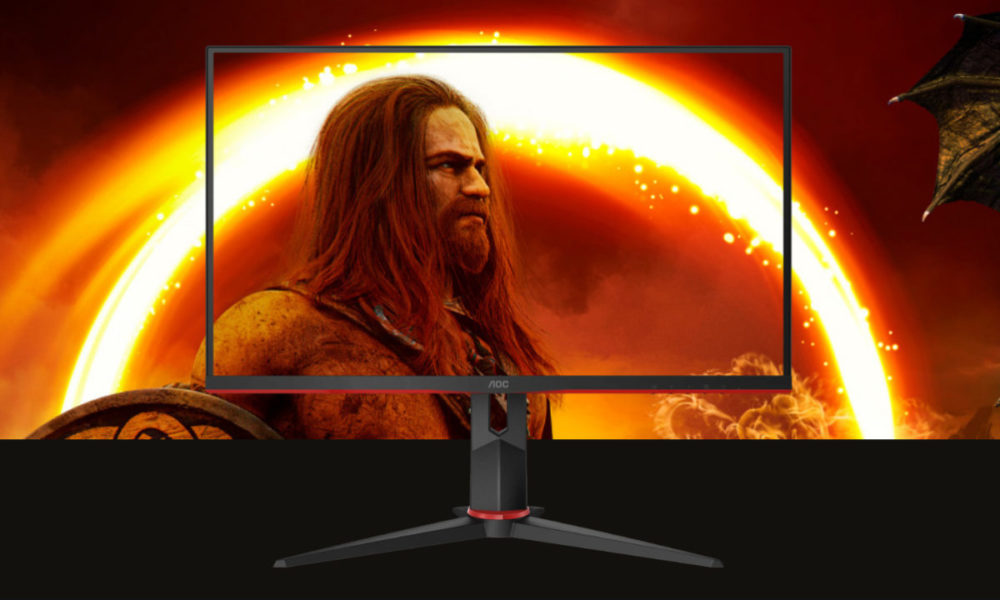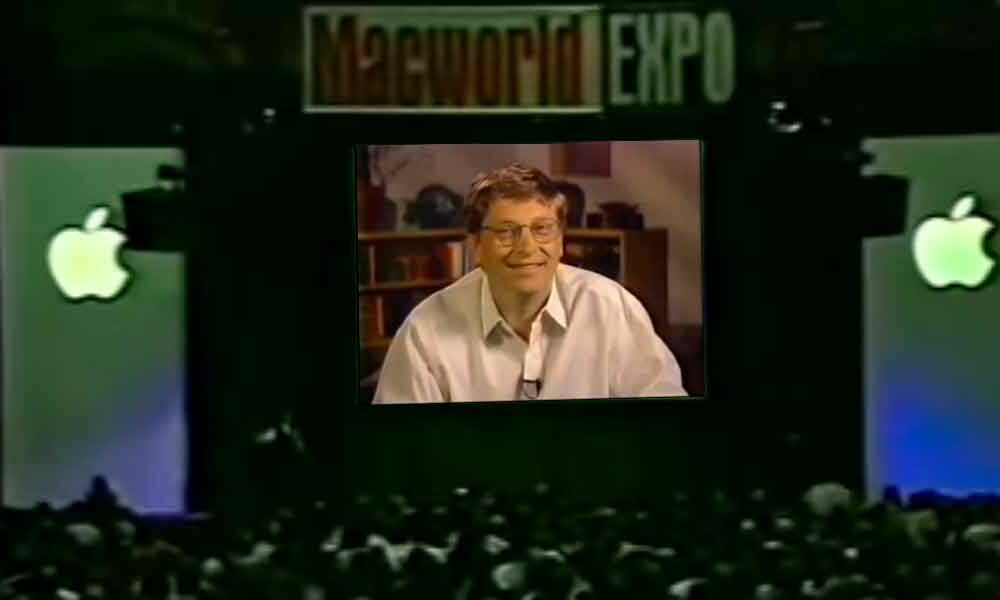
Apple is a tremendously successful company. Its shares on the stock market are considered a fairly safe investment, some of its devices are the reference in their respective markets and, in addition, it has managed to build an undoubtedly attractive image around itself. It is true that there are quite a few people who deny it, I am not saying that it has permeated universally, but for many people it is a reference, and that covers their devices with a patina of extra attractiveness. Like a pizza when you order it with extra cheese.
Microsoft, for its part, for decades dragged one more image… how to put it? Maybe grey? It is true that in Redmond they have been making efforts for a thousand years to have a “cooler” image, more in line with that of Apple, but for decades many users associated the image of Microsoft (and not a few continue to do so today) with beige office computers (are computers still being manufactured in that color?), while in the collective imagination Apple is synonymous with iPhone, colored devices and modernity. And that the Windows 95 launch campaign even featured a soundtrack by the Rolling Stones.
For its part, the relationship between the two companies has always been bittersweet. It is often remembered, for example, that Microsoft was inspired by Apple’s work in terms of user interfaces, something that was harshly criticized by Apple. However, the truth is that both companies were inspired by the work carried out at Xerox’s Palo Alto Research Center. The story of the visit by Apple staff to that research center deserves a separate chapter: it was authorized by Xerox executives in New York, who consistently underestimated the work carried out by the California team. History would take care of proving his mistake.
Contrary to widespread belief, heApple’s “1984” and “Lemmings” ads were not directly dedicated to Microsoft, but to IBMalthough of course, the attack was also felt at Microsoft, since their operating system was a key element for the IBM-PC and everything that would come later.
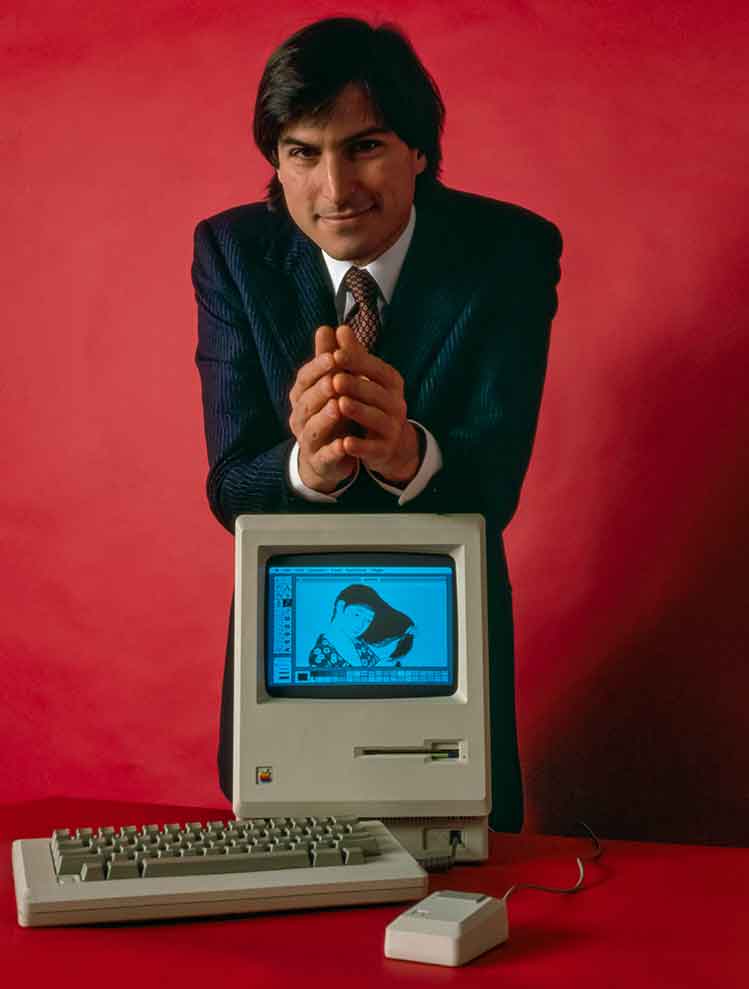
The last great moment of glory of Steve Jobs in his early days at Apple, the presentation and launch of the Macintosh.
Apple’s abyss
Apple’s successes are well remembered, and the same goes for its most iconic products: Apple I, Apple Lisa, Macintosh, etc., and the youngest who do not know history, may think that this has always been the case, that Apple has always has succeeded and that its position in the market has never been compromised… big mistake. At the end of the last century, hehe company’s situation was so, so complex that its survival was seriously compromised. For this it is necessary to remember some precedents.
Apple introduces the Macintosh in 1984, making it the an absolute sales phenomenon… at first. Its high price, $2,495 at the time, added to some important limitations, such as the fact that it only had 128 kilobytes of RAM, caused the sales volume to drop substantially a few months after its launch. This, added to other internal problems of the company, caused the great confrontation between Steve Jobs and John Sculley, CEO of the company (who had been chosen and hired for such a position, precisely, by Jobs), ended with a huge explosion.
And it is that, in 1985, Jobs hatched a plan for the board of directors to fire Sculley, but to his surprise, he found a meeting called by the CEO in which the managers sided with him, leaving Jobs with one hand in front and one behind. He was not fired, but he lost all operational functions and was transferred to a secondary work center, away from the front line. Tired of this situation, Steve Jobs resigned from Apple in September 1985..
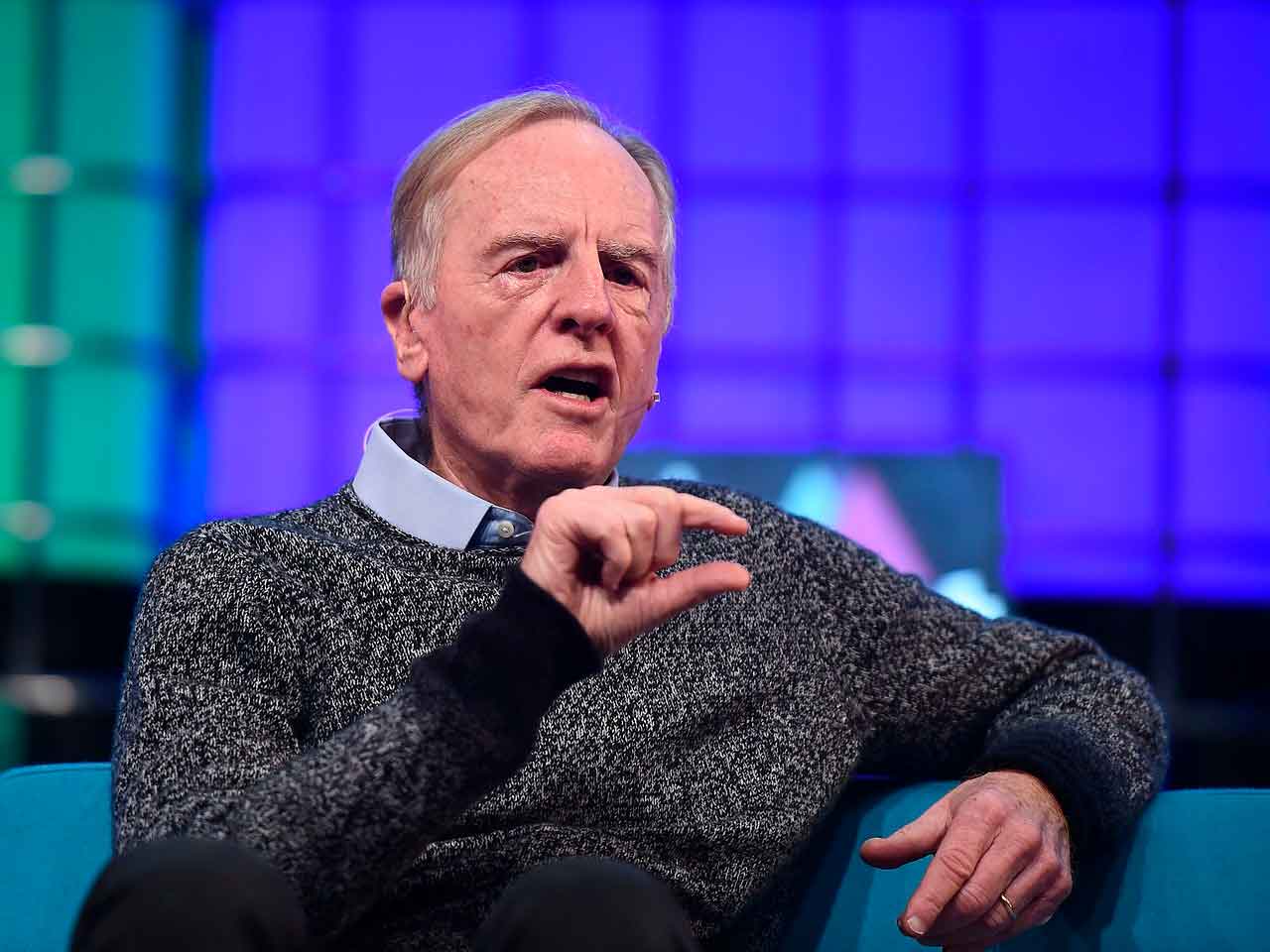
John Sculley, the man who signed Steve Jobs out of Apple in 1985 and who led Apple until 1993, one of the company’s lowest moments. Image: Web Summit
For a few years, after Jobs left, the measures taken to improve the situation were effective. From the improvement in the features of the Macintosh to its intelligent positioning in the desktop publishing market, they allowed Apple to consolidate itself as the platform for designers, a label that, during the drought that was about to arrive, would be decisive for Apple to did not sink completely.
The nineties, until practically half of his second five years, was the worst time for Apple. On the one hand, I saw how the already hatched ecosystem of compatible PCs was taking over the majority of the market by leaps and bounds. And although he tried to take the first steps in other markets, these were totally unsuccessful. Although the company began that decade with some successes, such as the Macintosh Classic, the Macintosh LC and the Macintosh IIsi of 1990 and, above all, the PowerBook of 1991, the commitment to low-cost models had a great impact on sales of the more expensive equipment.
The diversification of the catalog with the Quadra (high-end), Centris (mid-range) and Performa (consumer) families did not help either, as the company was able to clearly communicate the difference between them. Thus, the fact that one day he was the architect of the “exit” of Steve Jobs from Apple, a more than burned John Sculley ended up leaving Apple in 1993. From that moment and until 1997, the management of the company passed through the hands of Michael Spindler and Gil Amelio.
The return of Steve Jobs
In the troubled waters that Apple had to navigate between the beginning of the decade and 1997, one of the projects that eternalized in Apple was the design of an entirely new operating system. There were several attempts, since 1988, but always with disappointing results. Thus, after determining its incapacity, Apple decided to buy an operating system by way of acquiring the company that had developed it. Everything seemed closed in 1996, with the BeOS purchase process (created by a former Apple employee) until its economic aspirations exceeded the threshold of Apple’s budget, ruining the operation.
Meanwhile, NeXT, the project of Steve Jobs after his departure from Apple, sealed its end by declaring bankruptcy. Apple needed an operating system, NeXT had an operating system and Steve Jobs, and Gil Amelio, CEO at the time, joined the dotted line. Shortly after, at the end of 1996, NeXT and its intellectual property (including its operating system) became the property of Apple, and Steve Jobs returned, through the front door, to the company that he had founded in 1976 and from which he had left, quite traumatically, eight years later. One of the first decisions made by Jobs was to fire Amelio.
The economic situation was, at that time, little short of unsustainable, the precipice of bankruptcy was very, very close. So when he finally regained control of the company, Jobs had to make a few phone calls seeking support to ensure the viability of Apple. And he did it, although you don’t have to try too hard to imagine that it was at the cost of having to swallow some toads.

Apple stock price history. Days before the August 1977 keynote, shares were selling for 15 cents on the dollar. A few days after the announcement, its price had already risen to 25 cents per share. Source: Google
Jobs’s return to Apple was greeted with huge doses of triumphalism by the Apple user community. After a few rather erratic years, the founding father had returned and would be able to return the north to a company that seemed to have lost him years ago. However, they were not prepared for what was about to happen.
The day before yesterday they were fulfilled 25 years since August 7, 1997. And now, when we remember the keynotes starring Steve Jobs, what comes to mind are events full of applause, praise and an exultant Jobs capable of taking on the world. This was not the case, however, at the presentation that took place on August 7, 1997 at Macworld in Boston. That day Jobs received applause, yes, but also an enormous number of boos. Boos very unfair, well just saved apple.
Steve Jobs on stage, a huge screen behind him and the text Meaningful Partners on it. Jobs begins to talk about the importance of partners, walks to his dais, located at the side of the stage, takes a drink of water (with which he must have tried to swallow part of what was about to happen) and affirms that relationships destructive do not contribute anything. He states that during the last few weeks he has been analyzing Apple’s relationships with other companies and that there is one, bad at the moment, that could be very positive for both parties. At that time the density of the environment can be cut with a knife. But Jobs is not daunted, he keeps talking. He has to.
Then the bombshell arrives, he announces that an agreement has already been reached with that company and, while mentioning his name, it is shown on the big screen. That new partner is Microsoft, and after a few seconds of initial bewilderment, applause, whistles and boos overlap each other. Finally the first seem to win, but it only seems so, because a few seconds later, the stands return to booing. Everything seems to calm down a bit when the announcement of the arrival of Microsoft Office on Apple computers takes place, but the announcement that Internet Explorer would become the default web browser on Mac.
More announcements followed over the next few minutes, but the most revealing moment came when Jobs recounted that Microsoft had invested no less than 150 million dollars in Apple (boos), guaranteeing to keep that investment for a minimum of three years, and without that giving Gates’ company a voice on Apple’s board of directors (applause). It may not seem like a lot of money today, but in July 1997 the value of an Apple share was $0.15.
But there was still the best, not in terms of business, but of entertainment, and that is that after reviewing the terms of the collaboration, Jobs announced a special guest at the event. Seconds later, Bill Gates appeared on the big screen, as an omniscient observer. That moment was stuck, like a painful thorn, in the memory of many of the attendees.
However, and seen over time, the terms of that collaboration ended up playing a key role in Apple’s survival. Perhaps with different motivations, I do not deny it, but with the common purpose of saving such a historic brand (already back then) from disappearing, Steve Jobs asked for help and Bill Gates offered it. That was the day that Microsoft saved Apple and, although today is already very far away in time, and the relationship between the two companies is once again strained (remember that Microsoft has been accused of being behind the demand for Epic Games against Apple), it is worth remembering that at that time, and for a time, they worked hand in hand so that Apple did not fall.
Bonus track: Does the image of Bill Gates at the 1997 MacWord Expo remind you of anything? At that time, for some of the attendees, it was a kind of inverted frame of what, paradoxically, had been the best imaging tool a few years ago:
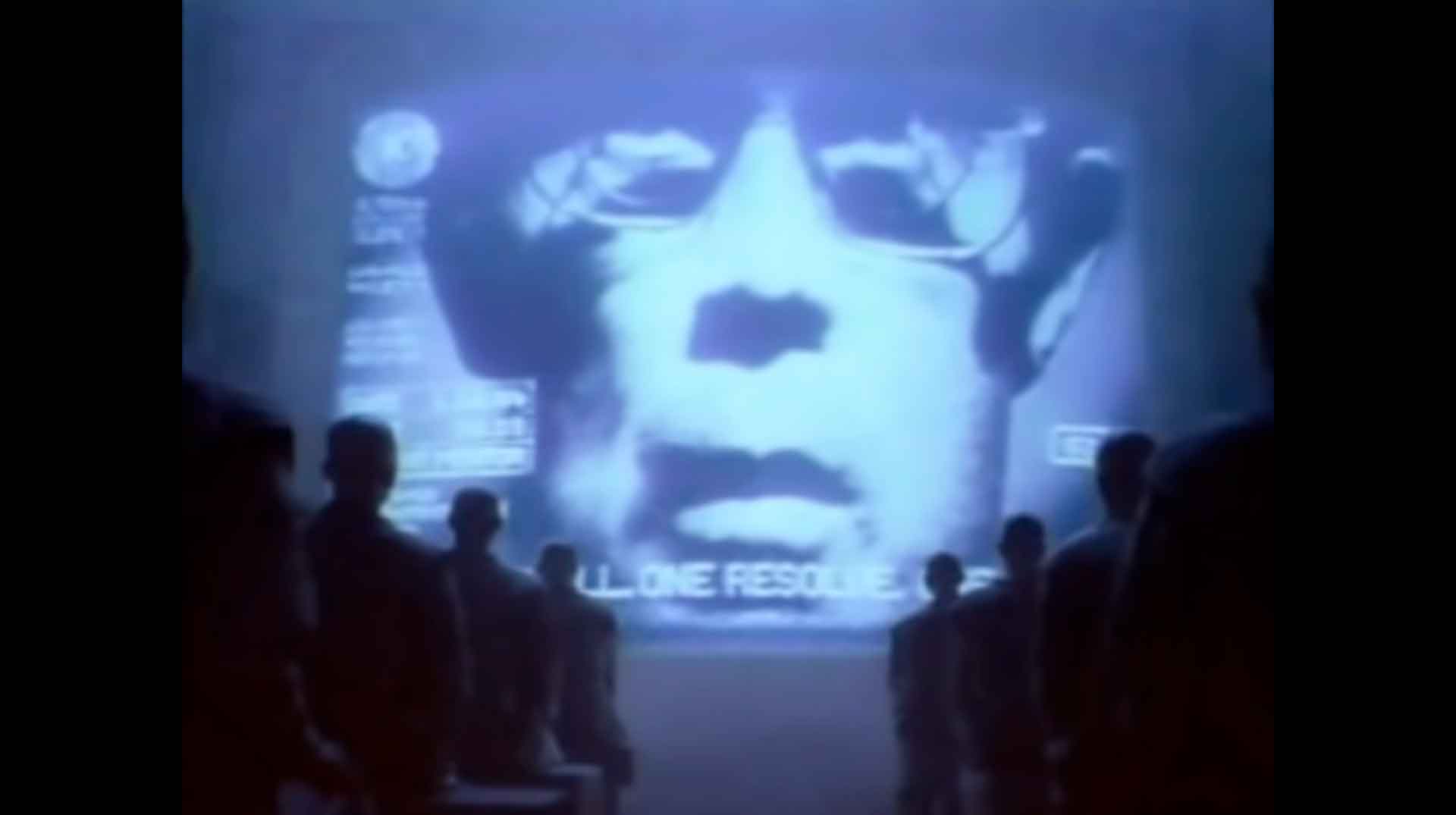
Still from Apple’s “1984” commercial announcing the launch of the Macintosh.



